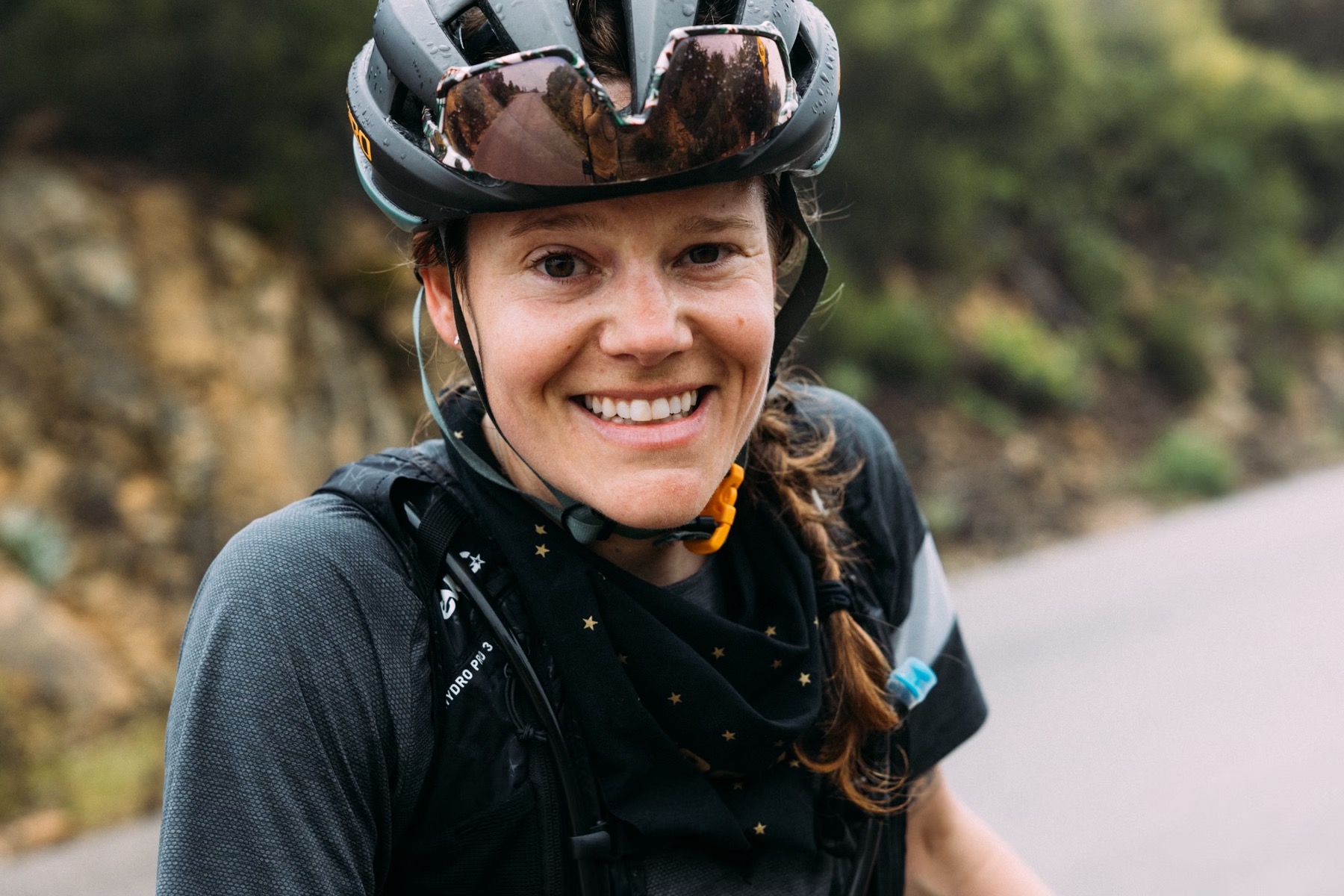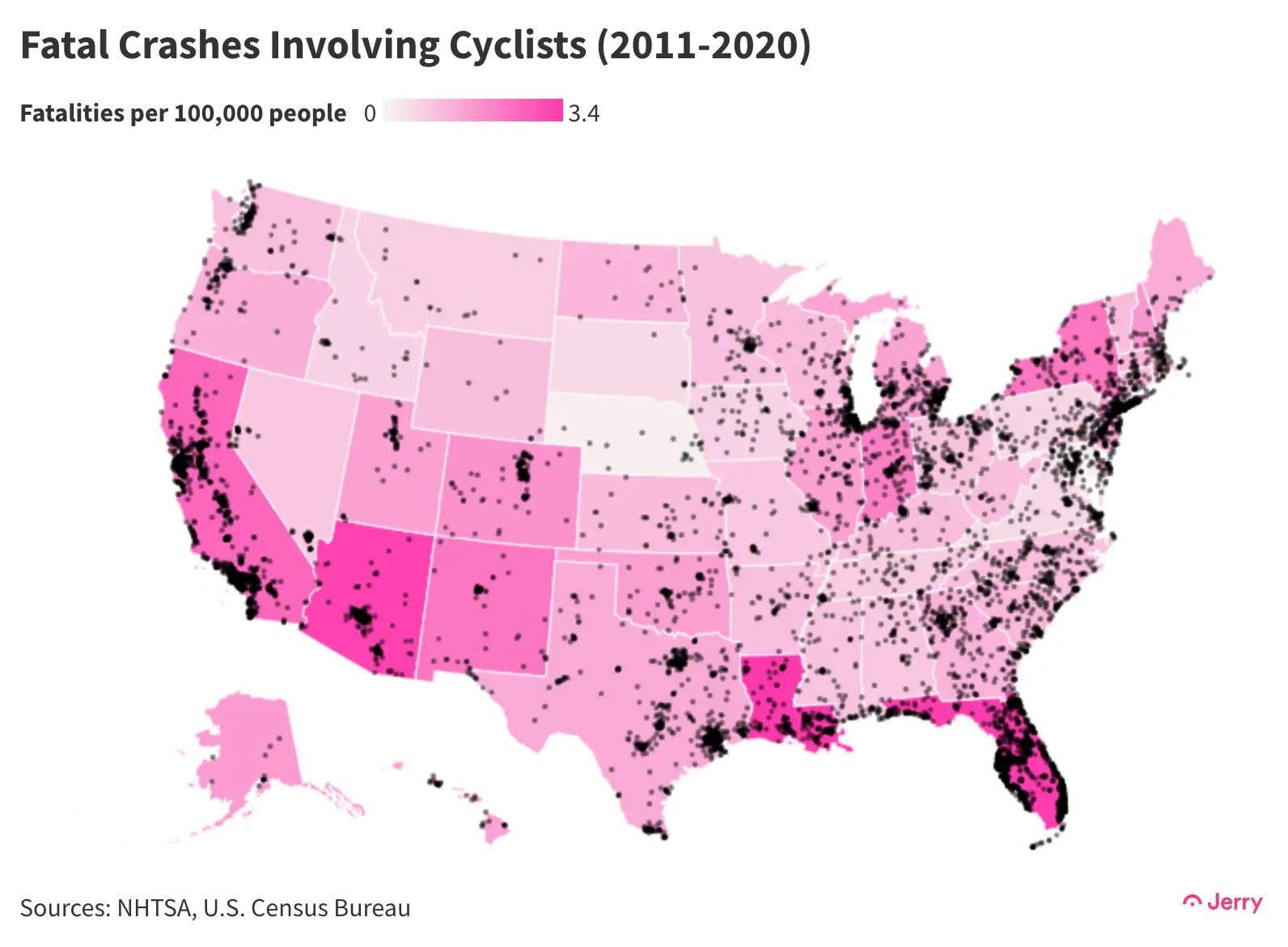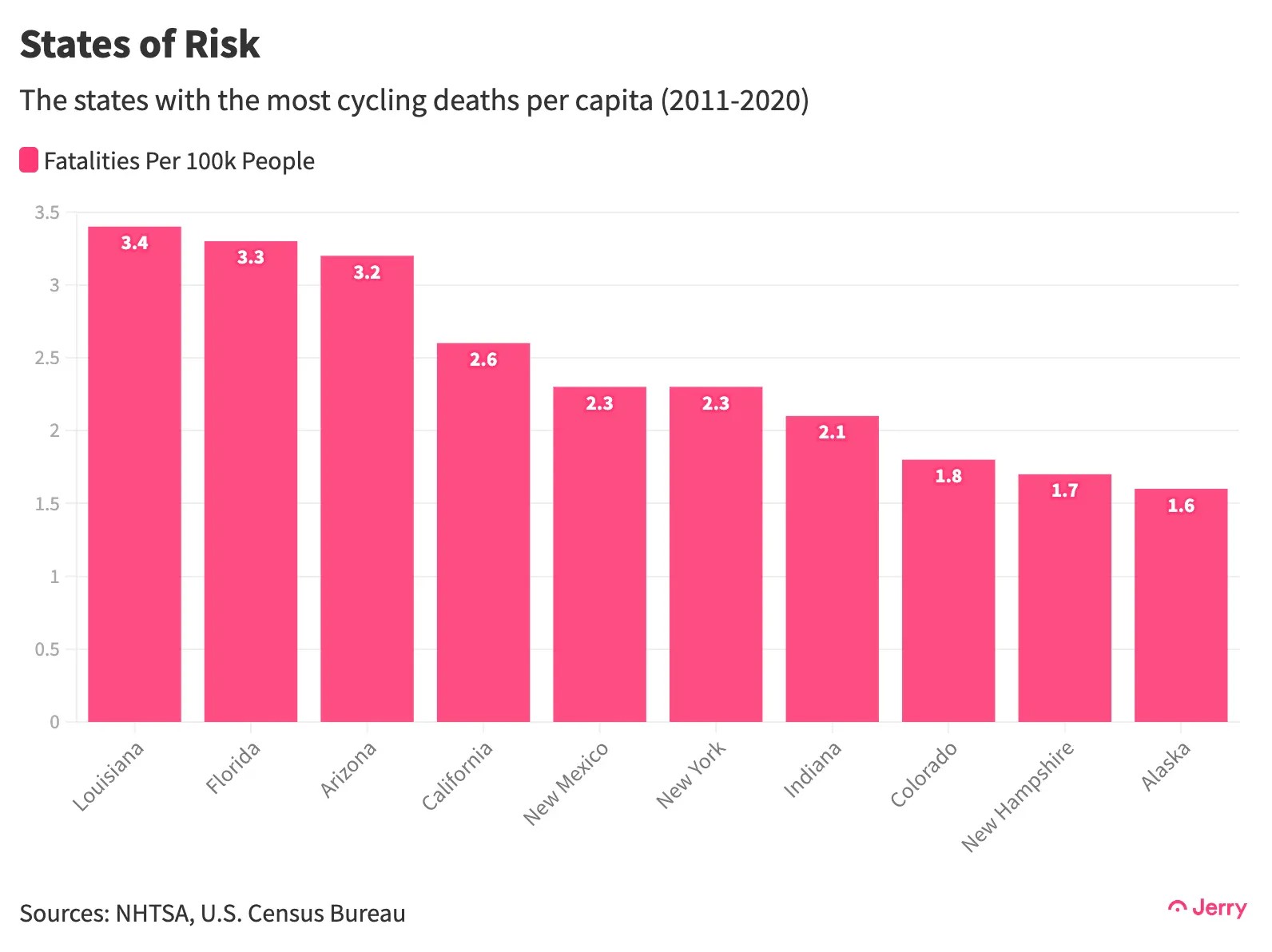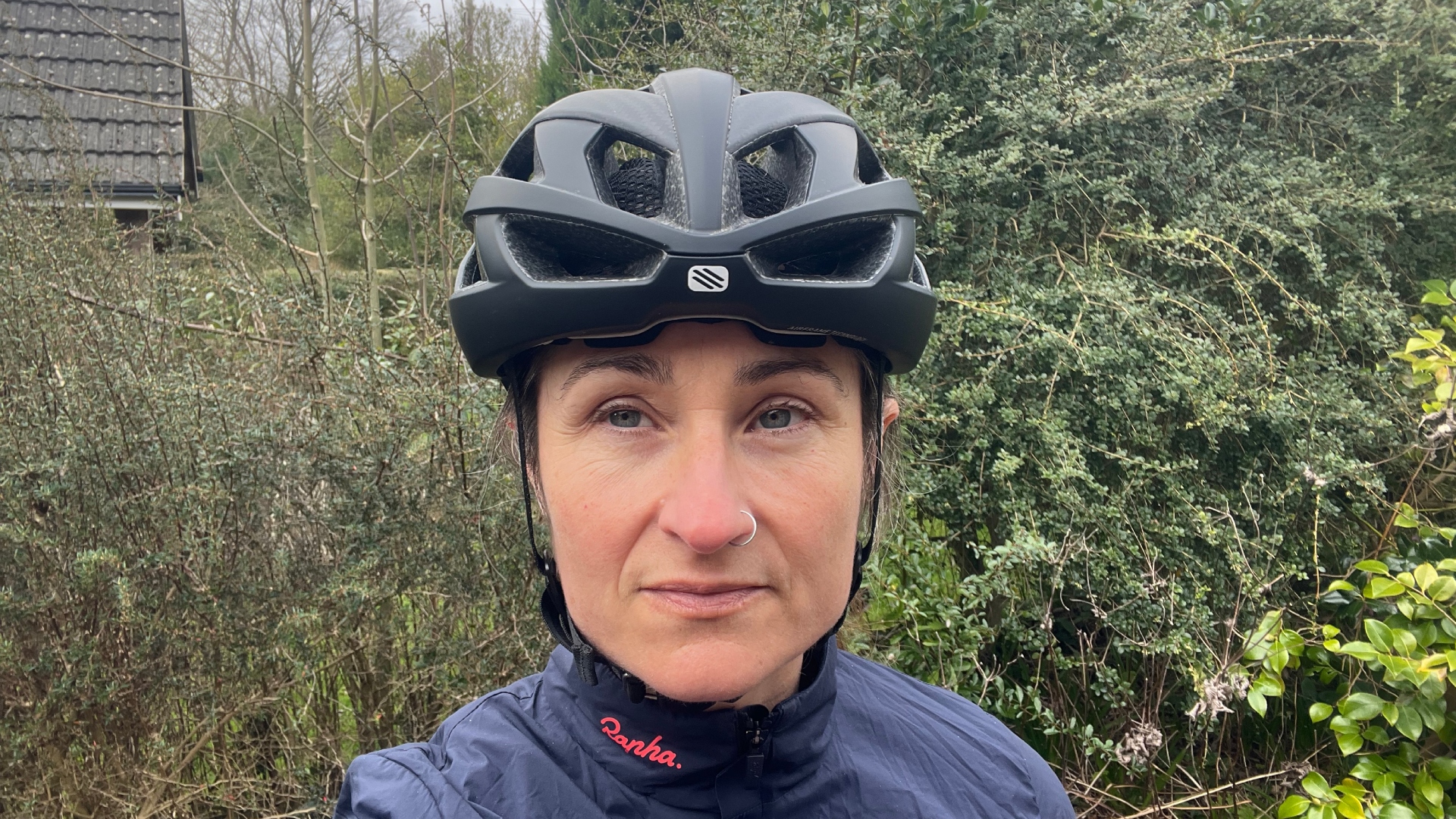US cycling fatalities hit multi-decade high, but there may be hope in 'safety in numbers' effect
On average, 19 people get killed while riding their bikes in the US every single week.


The latest traffic data from the National Highway Traffic Safety Administration (NHTSA) and the National Transportation Safety Board show that while the U.S. has seen a rise in urban bicycle ridership these past two decades, the number of bicyclist fatalities has grown right alongside it.
The early aughts, and the whole first decade of the new millennium, initially showed promise with a decline in bicyclist fatalities. But despite an increased amount of both riders and bike specific infrastructure, that number has been on the rise since 2011.
In fact, between 2010 and 2021, bicycle fatalities in traffic increased by 58 percent, a multi-decade high.
Between 2011 and 2021, 8,353 people lost their lives while riding bikes, nearly 1,000 of them in 2021 alone. In fact, 2021 saw 5% increase from the prior and marked the most bicycle traffic fatalities since 1975.
As it stands, the somber numbers mean that on average, 19 people get killed while riding their bikes in the U.S. every single week.
This troubling trend is in line with all traffic fatalities, which according to the NHTSA data has seen a 10.5% increase since 2020. In 2021, an estimated 42,915 people died in motor vehicle traffic crashes nationwide. Bicycle fatalities made up 2% of those traffic deaths.
But advocates like the League of American Bicyclists say there’s hope in the safety in numbers effect.
Get The Leadout Newsletter
The latest race content, interviews, features, reviews and expert buying guides, direct to your inbox!
“The numbers from NHTSA show a continued and tragic upward trend in the number of people killed while biking. We don't accept these deaths as inevitable — they are preventable,” Lauren Jenkins, The League’s Communications Director, told Cycling Weekly.
“At the core of the problem is a continued prioritization of speed and convenience for drivers. Designing our roads for all users and building safe bike infrastructure networks is critical to reverse this trend so that more people can choose to bike for transportation or recreation. In fact, studies show that when more people bike, bicycling is safer for everyone.”
There are many studies out there that counter the concerns that this increase of people on bikes produce more crashes and fatalities. This is the so-called “safety in numbers” (SiN) argument, which reasons that the more bicyclists and walkers there are in a population, the lower their risk. But a crucial part for SiN to be effective is having safe and separated infrastructure, something the Federal Highway Administration recommends as a proven safety countermeasure.
While the increase in fatalities is indeed problematic, the NHTSA data also shows that only one person was killed by a car while riding on a shared use path since 2014. Furthermore, only 6% of bicyclist fatalities occurred in a bike lane or paved shoulder.



The Most Dangerous Regions in the US
Car insurance savings company, Jerry, shared their analysis of the NHTSA and other data and narrowed it down to find the riskiest cities, counties and states in the U.S.
Looking at the decade between 2011 and 2020, New York recorded 138 bicyclist fatalities, topping the charts barely ahead of Los Angeles, a city that saw 137people killed while bicycling during that time.
What they also found is that counties surrounding big cities are often more dangerous than the city center itself.
In the New York metro area for example, Brooklyn, Queens, Suffolk and Nassau counties all saw more fatalities than Manhattan.
On the Westcoast, Los Angeles County saw the most cyclist fatalities of any county nationwide with 276 deaths. The surrounding Orange, Riverside and San Bernardino counties all ranked among the 15 worst nationwide as well.
In the south, the stretch of coastal South Florida from Palm Beach to Miami also ranked among the worst in the nation, both in total fatalities and deaths per capita. Broward County, home to Fort Lauderdale, saw the most cycling deaths per capita (among counties with a population of more than 1 million), and it ranked third nationwide in total fatalities.
And in the center of the country, the counties surrounding Phoenix and Tucson in Arizona both ranked among the five deadliest counties per capita, among counties with a population of more than 1 million.
"It’s difficult to determine exactly why more cyclists are dying on the nation’s roads and streets. Some point to the fact that Americans are driving bigger vehicles that deliver more force to a cyclist in an accident, raising the likelihood of serious injury and death," the Jerry analysis concludes.
"Others note that the trend reversal for cyclist deaths coincided roughly with the widespread adoption of smartphones and an increase in deadly crashes involving distracted drivers."

Thank you for reading 20 articles this month* Join now for unlimited access
Enjoy your first month for just £1 / $1 / €1
*Read 5 free articles per month without a subscription

Join now for unlimited access
Try first month for just £1 / $1 / €1

Cycling Weekly's North American Editor, Anne-Marije Rook is old school. She holds a degree in journalism and started out as a newspaper reporter — in print! She can even be seen bringing a pen and notepad to the press conference.
Originally from the Netherlands, she grew up a bike commuter and didn't find bike racing until her early twenties when living in Seattle, Washington. Strengthened by the many miles spent darting around Seattle's hilly streets on a steel single speed, Rook's progression in the sport was a quick one. As she competed at the elite level, her journalism career followed, and soon, she became a full-time cycling journalist. She's now been a journalist for two decades, including 12 years in cycling.
-
 Rudy Project Rebel bike helmet review
Rudy Project Rebel bike helmet reviewRebelling against the solid shell oversized helmet fashion, the Rudy Project Rebel goes big on ventilation and breathability, but there is a weight penalty
By Hannah Bussey Published
-
 'I wanted to be world and Olympic champion – my parents made me feel that it was possible': Meet Sophie Capewell and her gold medal-winning mum
'I wanted to be world and Olympic champion – my parents made me feel that it was possible': Meet Sophie Capewell and her gold medal-winning mumSome mothers and daughters make memories together. The world-beating Capewells make history too. Tom Davidson meets the extraordinary duo
By Tom Davidson Published